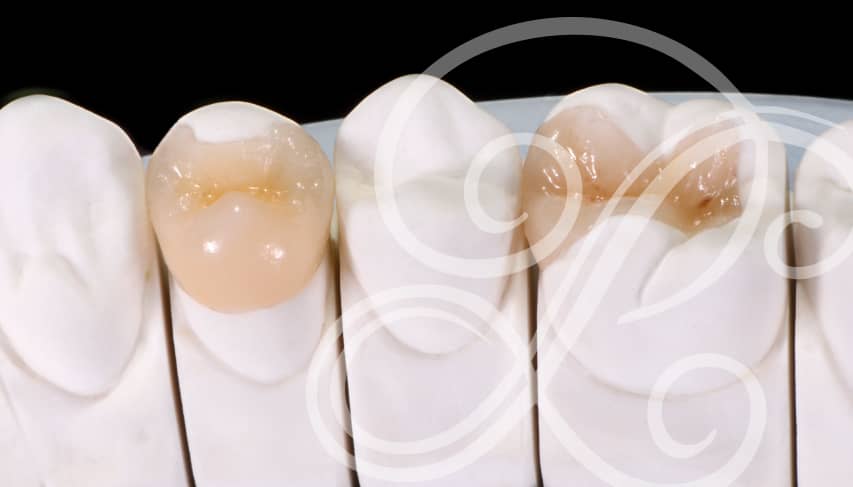When Are Dental Inlays and Onlays the Best Choice for Tooth Restoration?

Having a healthy smile can work wonders to improve your confidence and overall well-being, but when your dentist says you have tooth decay, it can throw a wrench into that mindset.
You may begin wondering what your choices are for restoring that deterioration, and—thanks to cosmetic dentistry—you have numerous aesthetic treatment options, such as dental inlays and onlays. These conservative tooth restoration options have improved thousands of smiles, helping patients regain their confidence and extend the durability of their teeth.
Understanding Cosmetic Dentistry
Cosmetic dentistry is a subsection of the overall dental industry that aims to improve the way your smile looks. A cosmetic dentist, therefore, offers solutions that beautify your smile, and as long as they maintain good oral health, anyone can pursue cosmetic dental solutions.
Some of the most common cosmetic dental procedures include the following:
- Teeth whitening
- Dental bonding
- Dental veneers
- Dental crowns
Although many of these treatments are strictly cosmetic, some options, such as crowns, can also repair your teeth while restoring your smile. Two similar cosmetic dentistry treatments that are less often heard of are dental inlays and onlays.
What are dental inlays and onlays?
Inlays and onlays function similarly to dental fillings, but whereas a filling gets placed directly into the tooth, dental onlays and inlays must be made in a dental laboratory before bonding to the prepared tooth surface (a procedure known as an indirect restoration). The two both differ from dental crowns, though, which cover the entire tooth.
Advantages of Dental Inlays and Onlays
Dental onlays and inlays offer multiple advantages when restoring your teeth. Aside from their ability to blend flawlessly with your smile, these restorative measures are a durable alternative to traditional fillings. They are fabricated from durable materials, such as porcelain, to withstand a lifetime of biting and chewing. Additionally, whereas a crown requires removing the damaged (and some healthy) tissue, thus weakening it, inlays and onlays can preserve the tooth’s structure.
Inlays and onlays are a more conservative approach that retains the tooth’s natural strength, and because your dentist bonds them to your tooth, they have a tight seal that prevents additional damage or irritation.
When might a dentist recommend an inlay or onlay?
Every patient has unique circumstances, but there are several common reasons why a dentist would recommend an inlay or onlay. Large fillings require a healthy tooth structure to retain the material, but when the affected tooth is significantly compromised, it could break or fracture, leading to additional damage.
As such, an inlay or onlay would be the best choice to restore the tooth.
Your dentist will recommend an inlay to restore minor tooth defects that do not involve the sharp, pointed edges of the tooth, known as the cusps. In contrast, a dental onlay may be recommended when there is more extensive damage to the tooth involving the cusps. Both restorations are made from a colored material that matches that of your natural tooth.
Inlays and Onlays Vs. Other Restorative Options
Your dentist will inform you of all the treatment options available to repair your smile, and they’ll discuss the pros and cons of each to help you make an informed decision before proceeding.
With that being said, inlays and onlays compare with other restorative options in the following ways:
Traditional Fillings
A filling is one of the most well-known dental restorations. When a tooth develops a small hole or cavity, filling material can seal it and prevent it from worsening.
Fillings made from silver and white materials are effective treatments for minor tooth decay, but depending on the size of the cavity, they may require the removal of the tooth’s healthy structure to prepare it for the procedure.
Over time, these fillings can expand, contract, or stain, disrupting the beauty of your smile and potentially causing pain. Inlays and onlays, in contrast, bond tightly to your tooth with a more precise fit, and their smooth, stain-resistant surfaces provide a long-lasting, attractive appearance.
Dental Crowns
Dental crowns are the most extensive restoration because they cover most of the tooth surface above the gumline. Typically, such a restoration is necessary when a tooth has become completely broken or otherwise severely decayed to the point where its natural structure cannot support daily chewing, though crowns may also be a cosmetic solution chosen to correct misshapen or discolored teeth.
When you receive a dental crown, your dentist needs to remove part of the tooth to be able to seamlessly fit the dental crown in place. Using inlays and onlays, on the other hand, allows your dentist to preserve more of the healthy portion of your tooth, thus retaining its structural integrity.
Learn More About Cosmetic Dental Solutions
When you need dental restorations, visiting a qualified and experienced dentist is the best option to get excellent results. Dr. Lucinda Garcia is a talented cosmetic dentist who will discuss your options and recommend the best treatment for your condition, including dental inlays and onlays. Contact Parmer Lane Family Dentistry today to schedule a consultation.